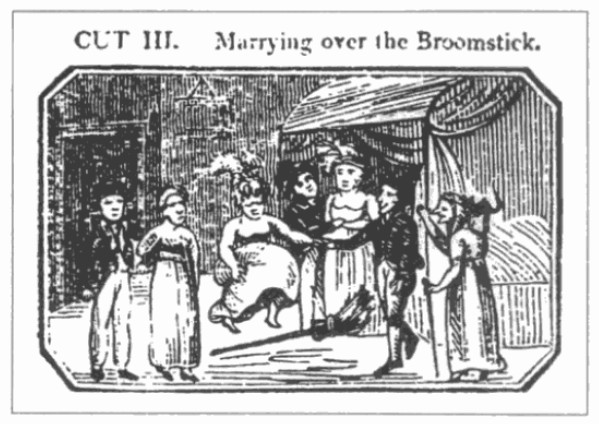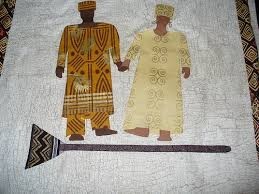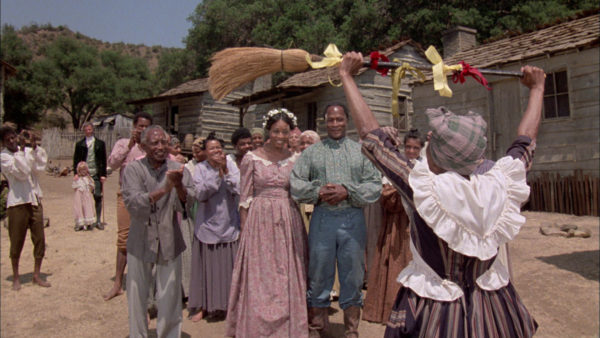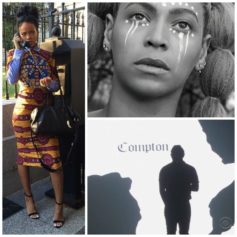Origins Highly Debated
The origins of broom jumping are highly debated. References to “broomstick marriages” emerged in England in the mid-to-late 18th century, always to describe a wedding ceremony of doubtful validity. The earliest use of the phrase is in the 1764 English edition of a French work: the French text described an elopement by a runaway couple hastily making un mariage sur la croix de l’épée (literally ‘marriage on the cross of the sword’), an expression the English translator freely renders as ‘performed the marriage ceremony by leaping over a broomstick.’
Some scholars speculate that cultural significance of the broom dates back to a region in West Africa that is now called Ghana. The areas occupied by the Asante ethnic group were reportedly well kept, due to the extreme use of local customized brooms. Brooms were also used in marriage ceremonies where they waved over marrying couples, serving as a way to remove evil spirits and/or sweep off past wrongs in order to start anew. Most times, at the end of the marriage ceremony, couples would jump the broom, representing a new beginning.

Because various European cultures still practice broom jumping today — but no African cultures on the continent presently do — some folklorists argue that the practice originated in Europe and was adopted by or imposed on enslaved Africans. According to a paper by Alan Dundes (1996), the custom originated among Romani people in England and Wales. Others have argued that British colonization led to the Asante discarding the practice of jumping the broom as they adopted other practices from European culture. An author on African-American wedding planning and traditions, Dania Green Roundtree argues that broom jumping is “an African tradition that has been Americanized” and was brought to Romani in the British Isles by “Moors during the Crusades.”
An Act of Rebellion
Despite its origins, the practice is well attested as a marriage ceremony in the 1840s and 1850s for enslaved Blacks in the Southern United States who were often not permitted to wed legally. In the absence of any legal recognition, Blacks defiantly developed their own methods of distinguishing between committed and casual unions. The ceremonial jumping of the broom served as an open declaration of settling down in a marriage relationship. It was usually done before witnesses as a public ceremonial announcement that a couple decided to be married despite what slave masters said.
Once Black marriages became legally recognized and sanctioned through the use of wedding rings, the broom ceremony was no longer required. Its revival in 20th-century African-American culture is attributed to the novel and miniseries Roots (1976, 1977)
It Meant More Than Just Being Married
In many instances, whoever jumped the highest would be the decision maker over the household. Jumping the broom for the wife was symbolic of her commitment to the family as well as her willingness to maintain the cleanliness of the couple’s new home.






